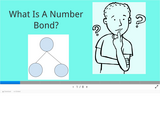
Students will understand what a number bond is and how they work.
- Subject:
- Education
- Elementary Education
- Material Type:
- Interactive
- Provider:
- Michigan Virtual
- Date Added:
- 12/12/2018

Students will understand what a number bond is and how they work.
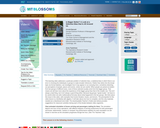
This learning video addresses a particular problem of selection bias, a statistical bias in which there is an error in choosing the individuals or groups to make broader inferences. Rather than delve into this broad topic via formal statistics, we investigate how it may appear in our everyday lives, sometimes distorting our perceptions of people, places and events, unless we are careful. When people are picked at random from two groups of different sizes, most of those selected usually come from the bigger group. That means we will hear more about the experience of the bigger group than that of the smaller one. This isn't always a bad thing, but it isn't always a good thing either. Because big groups ''speak louder,'' we have to be careful when we write mathematical formulas about what happened in the two groups. We think about this issue in this video, with examples that involve theaters, buses, and lemons. The prerequisite for this video lesson is a familiarity with algebra. It will take about one hour to complete, and the only materials needed are a blackboard and chalk.
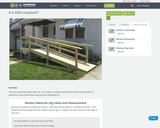
This is an activity that makes math real. The students complete some activities that show the length of a wheelchair ramp is determined using American Disabilities Act.

This lesson will allow students to build their own balloon car racer as an introduction to engineering and coding. Each pair or team of students will be able to engineer their balloon car, measure the performance of their cars using yard sticks, and set up a basic algorithm to construct and run their machine.PURPOSEThe goals for this lesson are to: (1) integrate engineering and coding to young students; (2) have students independenty identify the steps (an algorithm) to build and improve their racers; (4) be able to spot "bugs" in their algorithm; (3) integrate measurement and addition operations to determine which car went furthest overall; and (4) teach perserverance by showing students that it is normal to find bugs in algorithms/coding.
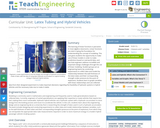
The learning of linear functions is pervasive in most algebra classrooms. Linear functions are vital in laying the foundation for understanding the concept of modeling. This unit gives students the opportunity to make use of linear models in order to make predictions based on real-world data, and see how engineers address incredible and important design challenges through the use of linear modeling. Student groups act as engineering teams by conducting experiments to collect data and model the relationship between the wall thickness of the latex tubes and their corresponding strength under pressure (to the point of explosion). Students learn to graph variables with linear relationships and use collected data from their designed experiment to make important decisions regarding the feasibility of hydraulic systems in hybrid vehicles and the necessary tube size to make it viable.

This text document lists detailed learning objectives for introductory statistics courses. Learning objectives are brief, clear statements of what learners will be able to perform at the end of a course.
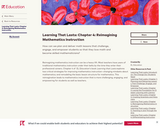
Reimagining mathematics instruction can be a heavy lift. Most teachers have years of traditional mathematics instruction under their belts by the time they enter their professional careers. Chapter 4 of EL Education’s book Learning that Lasts explores two critical strategies for improving mathematics instruction—changing mindsets about mathematics; and remodeling the basic lesson structure for mathematics. This reimagination leads to mathematics instruction that is more challenging, engaging, and empowering for students as well as teachers.
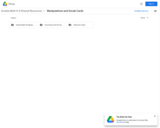
Eureka Math Vocab cards and Manipulatives
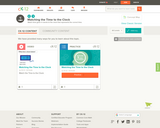
This short video and interactive assessment activity is designed to teach fourth graders about matching the time to the clock.
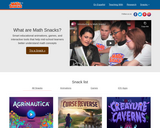
Math Snacks is a fun and interactive educational series. This website contains five animated videos focusing on key mathematical concepts included in the Common Core curriculum for grades 4-8. Each interactive is beautifully illustrated, contains audio, and is supported by supplementary printable resources. All learner resources are available in both English and Spanish. Teacher guides as well as teaching videos support classroom implementation. A powerful supplementary tool for educators teaching about ratios, rates, scale factor, unit conversion, and the number line, as well as a source for children's educational entertainment at home.
Math Snacks was developed by the Learning Games Lab located at New Mexico State University.
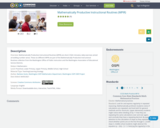
Mathematically Productive Instructional Routines (MPIR) are short (10ish minutes), daily exercises aimed at building number sense. These six different MPIR are part of the Mathematically Productive Instructional Routines collection from the Washington Office of Public Instruction and the Washington Association of Educational Service Districts.
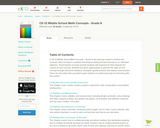
CK-12 Foundation's Middle School Math Grade 6 Flexbook covers the fundamentals of fractions, decimals, and geometry. Also explored are units of measurement, graphing concepts, and strategies for utilizing the book's content in practical situations.
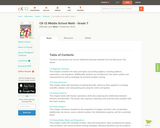
A work in progress, CK-12's Math 7 explores foundational math concepts that will prepare students for Algebra and more advanced subjects. Material includes decimals, fractions, exponents, integers, percents, inequalities, and some basic geometry.
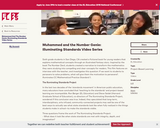
Sixth grade students in San Diego, CA created a fictional book for young readers that explains mathematical concepts through an illustrated fantasy story. Inspired by the book The Number Devil, students created a narrative to transform the mathematics they were studying into compelling and clear concepts for readers. This film features an interview with the teacher, and investigates this question: If we want to students to persevere to solve problems, what will give them the motivation to persevere?
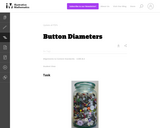
The purpose of this task is for students to relate addition and subtraction problems to money and to situations and goals related to saving money.
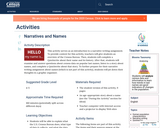
This activity serves as an introduction to a narrative writing assignment. To provide context for this activity, teachers will give students an overview of the Census Bureau. Then, students will complete a Quickwrite about their name and its history. After that, students will examine and answer questions about census data on popular last names, listen to a story about names, and complete a Quickwrite about that story. To further prepare for their narrative writing assignment about names (which is not part of this activity), students will jot down their thoughts in a graphic organizer.
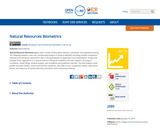
Natural Resources Biometrics begins with a review of descriptive statistics, estimation, and hypothesis testing. The following chapters cover one- and two-way analysis of variance (ANOVA), including multiple comparison methods and interaction assessment, with a strong emphasis on application and interpretation. Simple and multiple linear regressions in a natural resource setting are covered in the next chapters, focusing on correlation, model fitting, residual analysis, and confidence and prediction intervals. The final chapters cover growth and yield models, volume and biomass equations, site index curves, competition indices, importance values, and measures of species diversity, association, and community similarity.
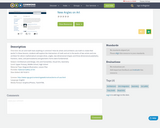
Do art and math have anything in common? How do artists and architects use math to create their works? In these lessons, students will explore the intersection of math and art in the works of two artists and one architect for whom mathematical concepts (lines, angles, two-dimensional shapes and three-dimensional polyhedra, fractions, ratios, and permutations) and geometric forms were fundamental.
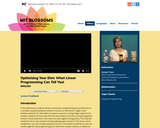
In this video lesson, students will learn about linear programming (LP) and will solve an LP problem using the graphical method. Its focus is on the famous "Stigler's diet" problem posed by the 1982 Nobel Laureate in economics, George Stigler. Based on his problem, students will formulate their own diet problem and solve it using the graphical method. The prerequisites to this lesson are basic algebra and geometry. The materials needed for the in-class activities include graphing paper and pencil. This lesson can be completed in one class of approximately one hour. If the teacher would like to cover the simplex algorithm by George Dantzig as an alternative solution method, an additional whole class period is suggested.
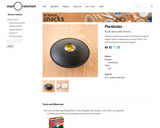
In this activity about light and reflection, learners use a special device called a Mirage Maker䋢 to create an illusion. What they perceive as an object is really an image in space, created by two concave mirrors. Learners will be surprised when they try to grab the object on the mirror and there's nothing there! Activity includes a light-ray diagram to help explain how the image is created.